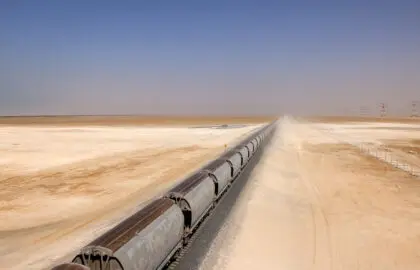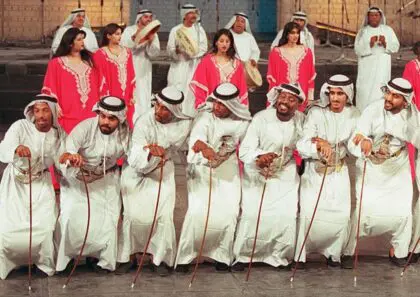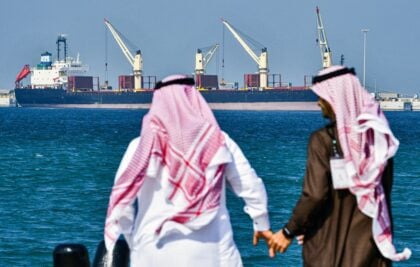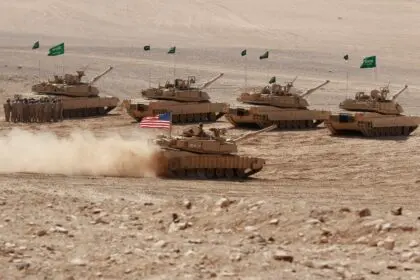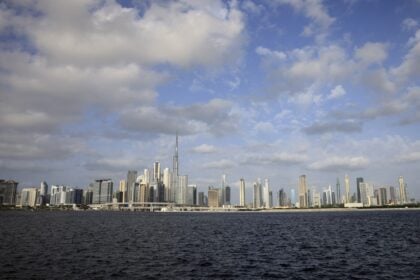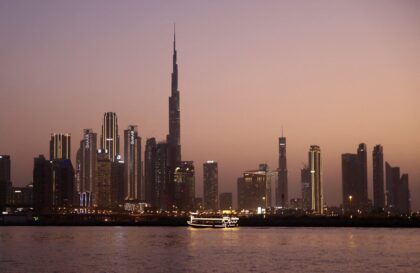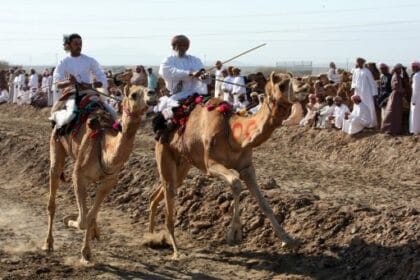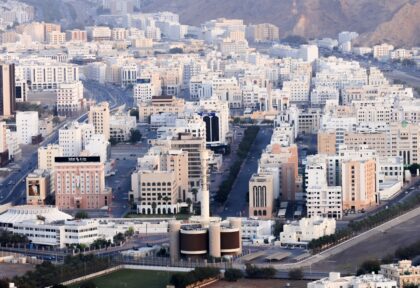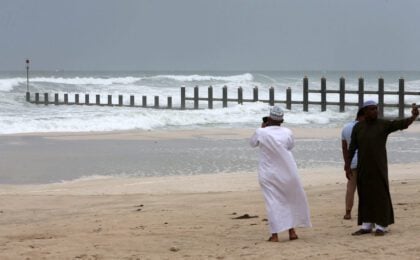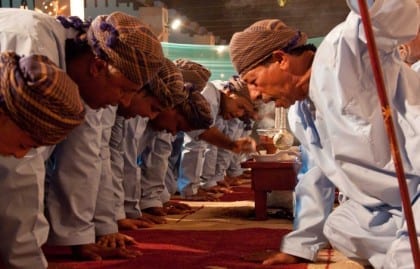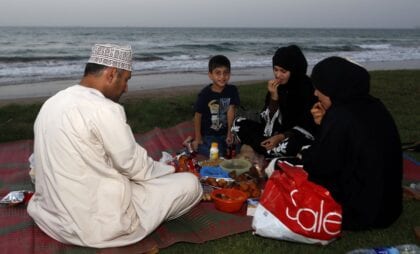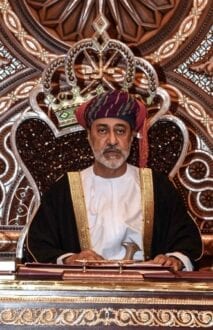
Introduction
Oman (official name: Sultanate of Oman) is located on the southeast coast of the Arabian Peninsula at the junction of the Arabian/Persian Gulf and the Arabian Sea.
The Sultanate is bordered to the southwest by Yemen, to the south and east by the Arabian Sea, to the north by the Gulf of Oman, to the northwest by the United Arab Emirates and to the west by Saudi Arabia. It covers an area of 309,500 k2. The Ruʾūs al-Jibāl (“Mountaintops”) occupies the northern tip of the Musandam Peninsula at the Strait of Hormuz/Bab as Salam.
This territory gives Oman its only frontage on the Gulf. Its offshore territories include the Al Masirah Island to the east and the Ḥallaniyyah Island (the largest of the five Khuriyya Muriyya Islands) 25 miles (40 km) off the south coast.
The capital city, Muscat, is located along the north coast. Overlooking the Gulf of Oman, the city blends modern and traditional architecture and it is a port and a commercial center.
In 1508, the Portuguese took control of Muscat and the adjacent coast until they were expelled in 1650. The Portuguese stayed in control of a commercial site and a naval base there. Two Portuguese forts dating back to the 16th Century overlook the city. The old wall of Muscat and some of its gates remain existent.

Oman’s population has long lived in a state of well-being, thanks to the Indian Ocean trade. In the late 18th Century, Muscat’s nascent Sultanate signed the first of a series of friendship agreements with Britain.
Over time, Oman’s dependence on British political and military advisers has increased, although the Sultanate has not become a British colony.
In 1970, the late Sultan Qaboos bin Saeed Al Saeed ousted his father. Since then, he ruled as a Sultan until his death in 2020.
Sultan Qaboos’s intensive modernization program opened the country to the outside world, and the Sultan gave priority to strategic relations with the United Kingdom and the United States.
On 11 January 2020, Haitham bin Tariq bin Taimur Al Saeed, former Minister of Heritage and Culture, was sworn in as the new Sultan of Oman pursuant to a written will by the former Sultan, who died on the same day.
According to December 2021 estimates, the population is estimated at 5.223 million. Ethnic groups in Oman include Arabs, Baloch, South Asians (Indians, Pakistanis, Sri Lankans, and Bengal), and Africans.
Arabic is the official language. Other languages used in Oman include English, Balochi, Swahili, Urdu, and some Indian dialects.
According to estimates for 2020, Muslims make up 85.9 percent of the country’s total population, Christians 6.4 percent, Hindus 5.7 percent, Buddhists 0.8 percent, Jews more than 0.1 percent, and others 1 percent. Those who do not belong to a specific belief make up 0.2 percent.
As indicated by the World Factbook: “Omani citizens represent approximately 56.4% of the population and are overwhelming Muslim (Ibadhi and Sunni sects each constitute about 45% and Shia about 5%); Christians, Hindus, and Buddhists account for roughly 5% of Omani citizens”
The local currency is the Omani riyal. Natural resources include petroleum, copper, asbestos, marble, limestone, chromium, gypsum, and natural gas.
In terms of military strength, Oman ranked 76th out of 145 countries listed in the 2022 Global Firepower Index.
With the introduction of satellite technology in the late 1980s, Omanis have become exposed to wider options of media and satellite channels. These channels quickly became more popular than Omani state-owned television channels.
Oman is ranked 163 out of the 180 countries in the Reporters Without Borders 2022 World Press Freedom Index
The media environment in the Sultanate of Oman became more diverse in 1997, with the government allowing the sale of foreign newspapers and magazines that had previously been critical of Oman or the Sultan.
The press is far less popular than television as a source of news for Omanis; however, the press remains a popular means of propaganda. This allowed private publications to continue working despite relatively low sales. The majority of readers are government employees and employees of State-owned companies because all government entities are subscribed to newspapers.
One of the prominent faces in Oman is Aziz Al-Hassani, a taxi driver who has become a member of parliament.
Dhow racing, horse racing, falconry, and camel racing are among the most important sports in Oman. This includes also Oman’s most popular traditional sport, bull butting.
The latter game is not as violent as it seems, because it only involves two bulls engaging in a powerful barrage of headbutts where the bull that remains standing is the winner. Although this game continues for a few minutes, it still attracts many people.
Football is played in Oman as the world’s most prominent sport today. The Omani Football Association manages the national football team and the Omani League. The Omani national football team won the Gulf Cup in 2009 and 2017.
The climate is hot and dry in the interior and hot and humid along the coast. Summer temperatures in Muscat the capital and other coastal sites often rise to 43°C, with high humidity. Winters are mild, with low temperatures averaging about 17°C. Temperatures are similar in the interior, although they are more moderate in the highlands. The rainfall throughout the country is minimal.
Northern Oman is dominated by three physiographic zones. The long, narrow coastal plain known as Al Batinah stretches along the Gulf of Oman. The high, rugged Hajar Mountains extend southeastward, parallel to the gulf coast, from the Musandam Peninsula to a point near Cape al-Ḥadd at the easternmost tip of the Arabian Peninsula. Much of the range reaches elevations above 4,800 feet; Mount Shams at an elevation of 9,777 feet is the country’s highest point.
The most prominent touristic attractions in Oman are the Royal Opera House Muscat, Ras Al Jinz Reserve in the Eastern Region, and Mount Shams, Oman’s highest mountain peak.
Oman uses the right-hand-traffic rule of the road as in the rest of the Middle East and North African countries.
The Standard Time in Oman is 4 hours ahead of the Greenwich Mean Time (GMT+4).
The international calling code is +968.


